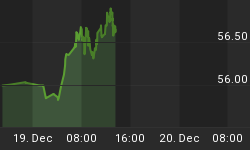There was no surprise in today's release of the October ISM Manufacturing survey showing a decline to 51.2-- lowest since June 2003 -- considering the 0.84 correlation between the ISM manufacturing and the Chicago PMI over the past 8 years, and the 16-month low in yesterday's Chicago survey.
The essential relevance of the ISM report to FX and bond markets is the plunge in the prices paid index to a 4-year low of 47 in October, from September's 61, affirming that pricing power is on the decline, reducing the inflation argument for the Federal Reserve. The chat below shows how the prices paid indices of major business surveys remain on the decline.

Meanwhile, the inter-market development are in place for further declines in the US dollar, as bond yields hit 4-week lows (prices in 4-week highs) and gold prices rally to 3 ½ week highs. The upper chart on the right shows prices on the Dec 10-year futures contract, which are inversely proportional to their falling yields. With much ink already spilled on the unwinding of yen carry trades, the exodus out of these plays is yet to unfold as investors hope to collect on the yield differential. But as the downdraft of carry trades has shown in the past (Aug-Sep 1998, and April 2006), rapid gains in low yielding currencies can swiftly erase the yield carry. With gold prices above their 200-day moving average and the Japanese yen already down 2.5% from its high, the pair is ripe for further declines. We stick with our year-end forecast of 114. But before that, markets need to tackle the 116.00 figure, followed by the key support at 115.70 -- 38% retracement of the rise from the May 19 low.

Finally, although both long and short term yields are on the decline, the 10-2 year yield spread has quietly shrunk from -0.1% last week to today's -0.08% today. This suggests that further data weakness in the US will step up more downward pressure on the short-end than on the long end, at which point treasury futures will give us better clarity as to when the Federal Reserve will begin easing monetary policy. Dollar bears may not find much to cheer about in the expected bounce in October nonfarm payrolls (to 110K from 51K), but a another 0.2% reading in average hourly earnings and an upward creep in the unemployment rate may do the trick.















